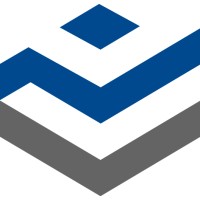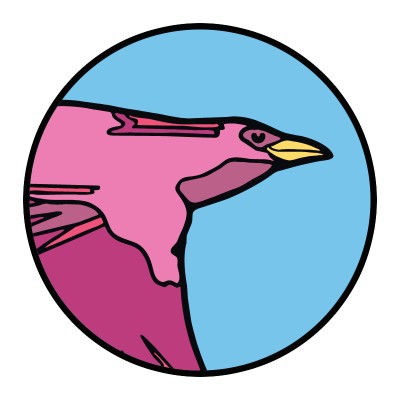Halter: The New Frontier in Cattle Management Technology
June 24, 2025, 5:38 pm
In the heart of New Zealand, a tech revolution is quietly transforming the cattle ranching landscape. Halter, an agtech startup, has recently secured $100 million in Series D funding, propelling its valuation to a staggering $1 billion. This makes Halter one of New Zealand's rare unicorns, a beacon of innovation in a field often overlooked by the tech-savvy.
Founded in 2016 by Craig Piggott, Halter is not just another tech company. It’s a game-changer. The company specializes in virtual fencing and animal management systems designed to enhance productivity on U.S. cattle ranches. With thousands of customers across New Zealand, Australia, and the United States, Halter is rapidly expanding its footprint. The funding round was led by BOND, with participation from notable investors like NewView, Bessemer Venture Partners, DCVC, Blackbird, Icehouse Ventures, and Promus Ventures.
So, what exactly does Halter offer? At its core, the company provides a smart collar for each cow, paired with connectivity towers and a user-friendly app. This technology allows farmers to manage their herds from the palm of their hand. Imagine a world where ranchers can guide their cattle with beeps and vibrations, moving them effortlessly across pastures without the need for physical fences. This is not science fiction; it’s Halter’s reality.
The implications of this technology are profound. Traditional cattle management is labor-intensive and time-consuming. Ranchers often rely on manual labor to herd cattle, a process that can be inefficient and stressful for both animals and humans. Halter’s system eliminates much of this strain. With virtual fencing, farmers can create boundaries and manage grazing patterns without ever stepping foot outside. This not only saves time but also reduces the stress on cattle, leading to healthier herds and, ultimately, better yields.
The U.S. agricultural sector is facing significant challenges. Recent staffing shortages, exacerbated by immigration policies, have left many ranchers struggling to find labor. Halter’s technology could be a lifeline. By automating cattle management, it allows farmers to do more with less. The ability to monitor and manage cattle remotely means that fewer hands are needed on deck. This is a crucial advantage in an industry where every minute counts.
Halter’s expansion into the U.S. market is timely. The American farm industry is ripe for innovation. As ranchers grapple with labor shortages and rising operational costs, technology like Halter’s offers a glimmer of hope. The company’s Boulder, Colorado office positions it strategically to tap into the vast U.S. agricultural landscape.
But the journey is not without its hurdles. The agtech sector is competitive, with numerous startups vying for attention and investment. Halter must continue to innovate and adapt to stay ahead. The recent funding will be used to expand operations and enhance development efforts. This is not just about growth; it’s about survival in a fast-paced market.
Investors are betting big on Halter’s potential. The backing from prominent venture capital firms signals confidence in the company’s vision. The agtech industry is projected to grow significantly in the coming years, driven by the need for efficiency and sustainability in food production. Halter is well-positioned to capitalize on this trend.
The technology behind Halter is fascinating. Each smart collar is equipped with GPS and sensors, allowing for real-time tracking of cattle. This data-driven approach enables farmers to make informed decisions about grazing patterns, health monitoring, and overall herd management. It’s like having a digital shepherd at your fingertips.
As Halter continues to scale, it will likely face scrutiny and challenges. The agricultural sector is steeped in tradition, and not all ranchers may be ready to embrace such a radical shift. Education and outreach will be crucial. Farmers need to see the tangible benefits of adopting this technology. Success will depend on Halter’s ability to communicate its value proposition effectively.
The future of cattle ranching is on the brink of transformation. Halter is leading the charge, merging technology with agriculture in a way that has never been done before. The potential for increased productivity, reduced labor costs, and improved animal welfare is immense.
In conclusion, Halter is not just a tech startup; it’s a harbinger of change in the agricultural landscape. With its recent funding and innovative approach, the company is poised to redefine how cattle are managed. As it expands into the U.S. market, all eyes will be on Halter. Will it succeed in convincing traditional ranchers to embrace the future? Only time will tell, but one thing is certain: the cattle industry is about to get a digital makeover.
Founded in 2016 by Craig Piggott, Halter is not just another tech company. It’s a game-changer. The company specializes in virtual fencing and animal management systems designed to enhance productivity on U.S. cattle ranches. With thousands of customers across New Zealand, Australia, and the United States, Halter is rapidly expanding its footprint. The funding round was led by BOND, with participation from notable investors like NewView, Bessemer Venture Partners, DCVC, Blackbird, Icehouse Ventures, and Promus Ventures.
So, what exactly does Halter offer? At its core, the company provides a smart collar for each cow, paired with connectivity towers and a user-friendly app. This technology allows farmers to manage their herds from the palm of their hand. Imagine a world where ranchers can guide their cattle with beeps and vibrations, moving them effortlessly across pastures without the need for physical fences. This is not science fiction; it’s Halter’s reality.
The implications of this technology are profound. Traditional cattle management is labor-intensive and time-consuming. Ranchers often rely on manual labor to herd cattle, a process that can be inefficient and stressful for both animals and humans. Halter’s system eliminates much of this strain. With virtual fencing, farmers can create boundaries and manage grazing patterns without ever stepping foot outside. This not only saves time but also reduces the stress on cattle, leading to healthier herds and, ultimately, better yields.
The U.S. agricultural sector is facing significant challenges. Recent staffing shortages, exacerbated by immigration policies, have left many ranchers struggling to find labor. Halter’s technology could be a lifeline. By automating cattle management, it allows farmers to do more with less. The ability to monitor and manage cattle remotely means that fewer hands are needed on deck. This is a crucial advantage in an industry where every minute counts.
Halter’s expansion into the U.S. market is timely. The American farm industry is ripe for innovation. As ranchers grapple with labor shortages and rising operational costs, technology like Halter’s offers a glimmer of hope. The company’s Boulder, Colorado office positions it strategically to tap into the vast U.S. agricultural landscape.
But the journey is not without its hurdles. The agtech sector is competitive, with numerous startups vying for attention and investment. Halter must continue to innovate and adapt to stay ahead. The recent funding will be used to expand operations and enhance development efforts. This is not just about growth; it’s about survival in a fast-paced market.
Investors are betting big on Halter’s potential. The backing from prominent venture capital firms signals confidence in the company’s vision. The agtech industry is projected to grow significantly in the coming years, driven by the need for efficiency and sustainability in food production. Halter is well-positioned to capitalize on this trend.
The technology behind Halter is fascinating. Each smart collar is equipped with GPS and sensors, allowing for real-time tracking of cattle. This data-driven approach enables farmers to make informed decisions about grazing patterns, health monitoring, and overall herd management. It’s like having a digital shepherd at your fingertips.
As Halter continues to scale, it will likely face scrutiny and challenges. The agricultural sector is steeped in tradition, and not all ranchers may be ready to embrace such a radical shift. Education and outreach will be crucial. Farmers need to see the tangible benefits of adopting this technology. Success will depend on Halter’s ability to communicate its value proposition effectively.
The future of cattle ranching is on the brink of transformation. Halter is leading the charge, merging technology with agriculture in a way that has never been done before. The potential for increased productivity, reduced labor costs, and improved animal welfare is immense.
In conclusion, Halter is not just a tech startup; it’s a harbinger of change in the agricultural landscape. With its recent funding and innovative approach, the company is poised to redefine how cattle are managed. As it expands into the U.S. market, all eyes will be on Halter. Will it succeed in convincing traditional ranchers to embrace the future? Only time will tell, but one thing is certain: the cattle industry is about to get a digital makeover.


